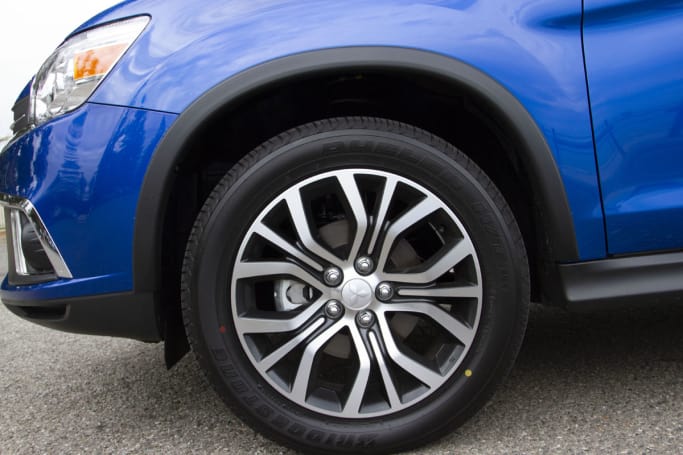Mitsubishi ASX 2019 review
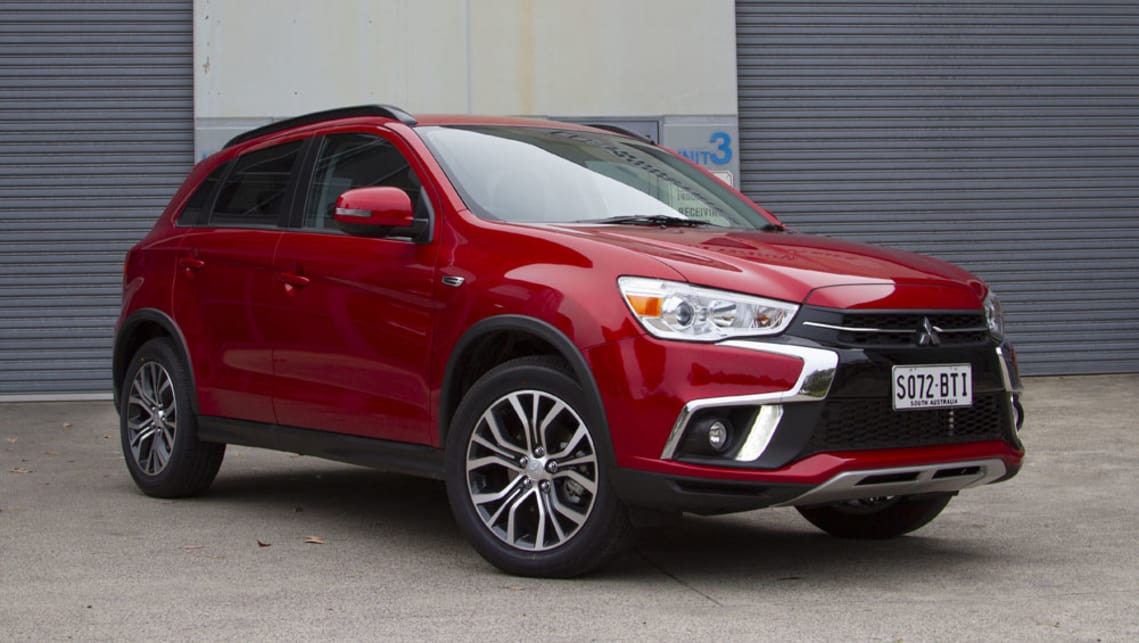

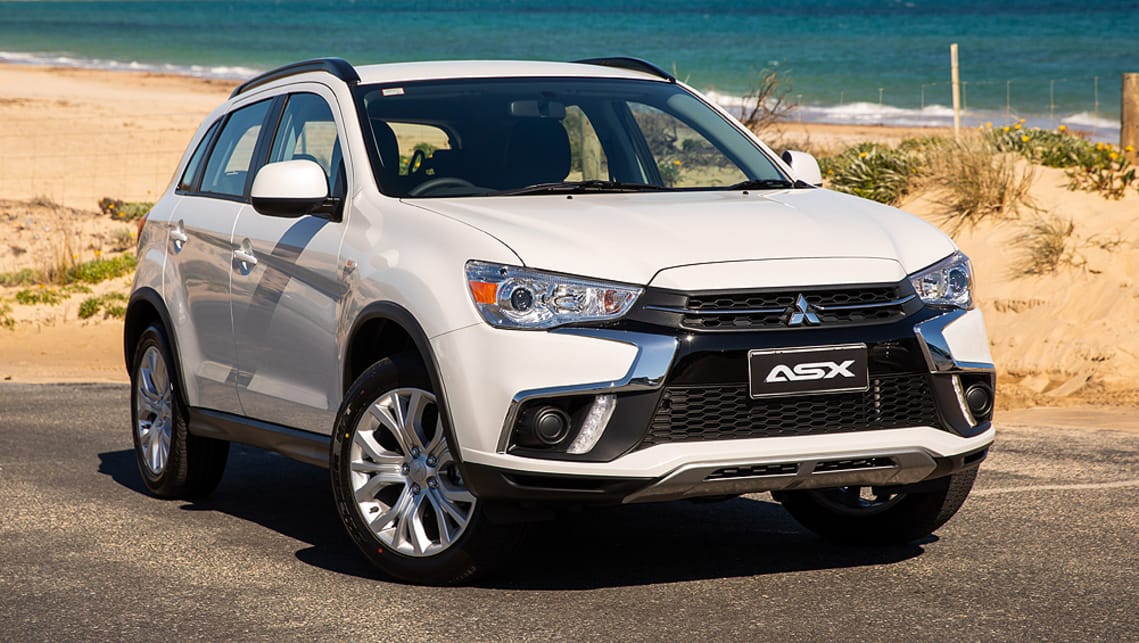
Over the last near-decade, the Mitsubishi ASXhas consistently sold without any major changes. Evolution has been the name of the game (ironically), with now-annual running changes to the ASX to try and keep it fresh.
The compact SUV segmentis enormously competitive, with new entrants squeezing the ASX harder than ever. Amazingly, despite being ready for the pension, it still manages to post excellent sales figures when by rights it should be languishing near the bottom - old cars are old news.
Does it represent good value for the price? What features does it come with?
The MY19 upgrade - one of many over the ASX's long and fruitful life - has brought some changes to the price list and a rejig of the available models. There's a new entry-level model, the ES, the mid-point LS and a range-topping Exceed. All pricing is RRP and how much you pay is between you and your dealer. The drive-way price is helpfully listed on the Mitsubishi website, however. Our model comparison features the full price range.
A big change for MY19 is the end of the all-wheel drive (AWD) for the ASX, with just front-wheel drive on offer. So no more AWD option, meaning if you're after an off-road review, you're out of luck.
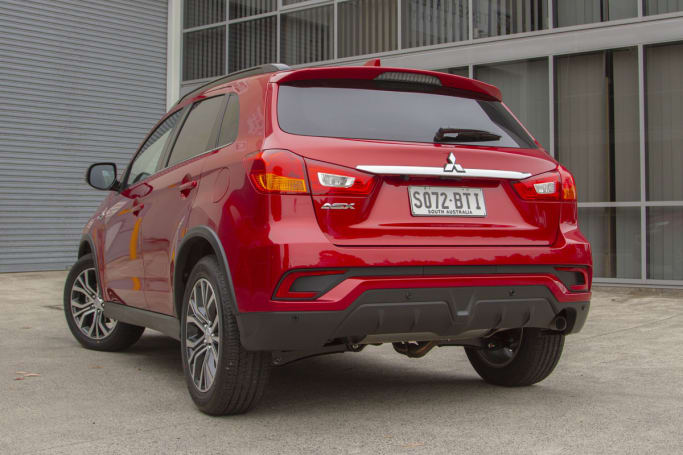
The value proposition is pretty reasonable - you get 18-inch alloys, four-speaker stereo, climate control, reversing camera, halogen headlights, leather gear shifter and steering wheel, power folding rear vision mirrors, cruise control, power windows all round, cloth trim and a space saver spare tyre.
The ES ADAS is essentially the ES with a safety pack, which you can read about in the safety section.
Moving on to the second of the three models, the LS is auto-only - so no manual transmission. To the ES spec you can add keyless entry and start, the 'ADAS' safety package, rear parking sensors, fog lights, auto high beam, auto headlights and wipers and partial leather seats with fake suede inserts (which are rather good, actually).
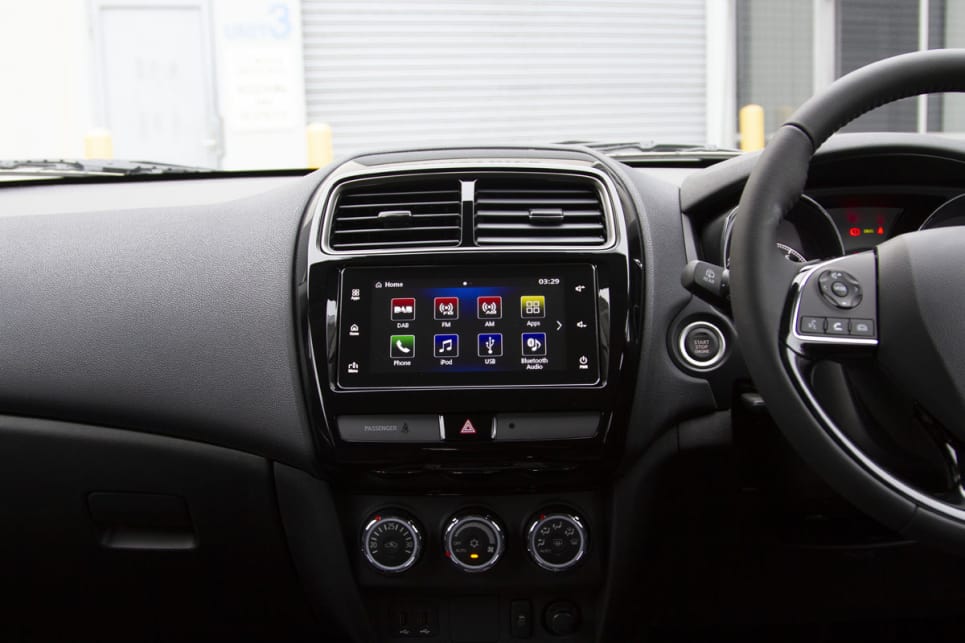
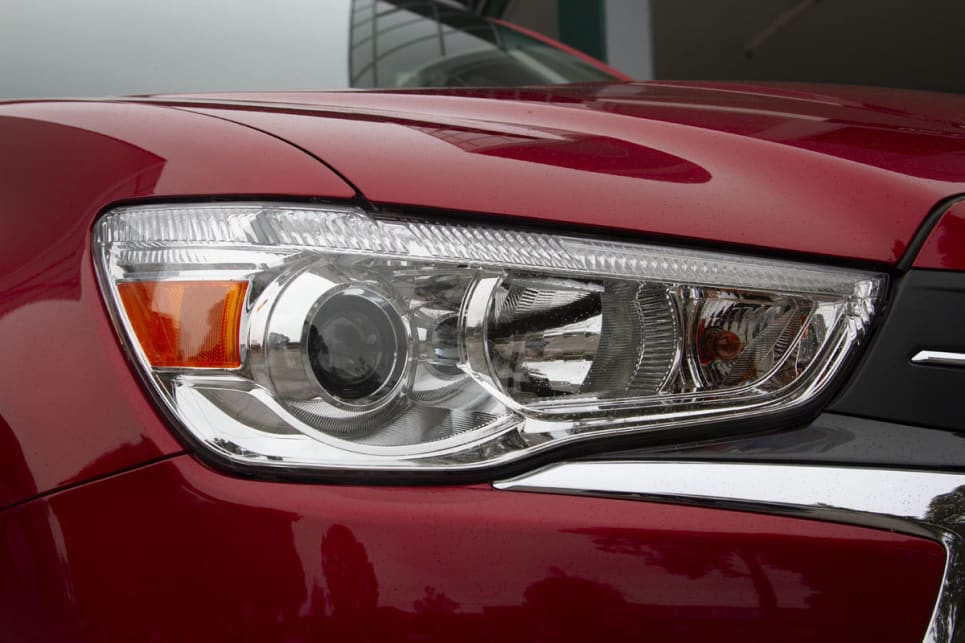
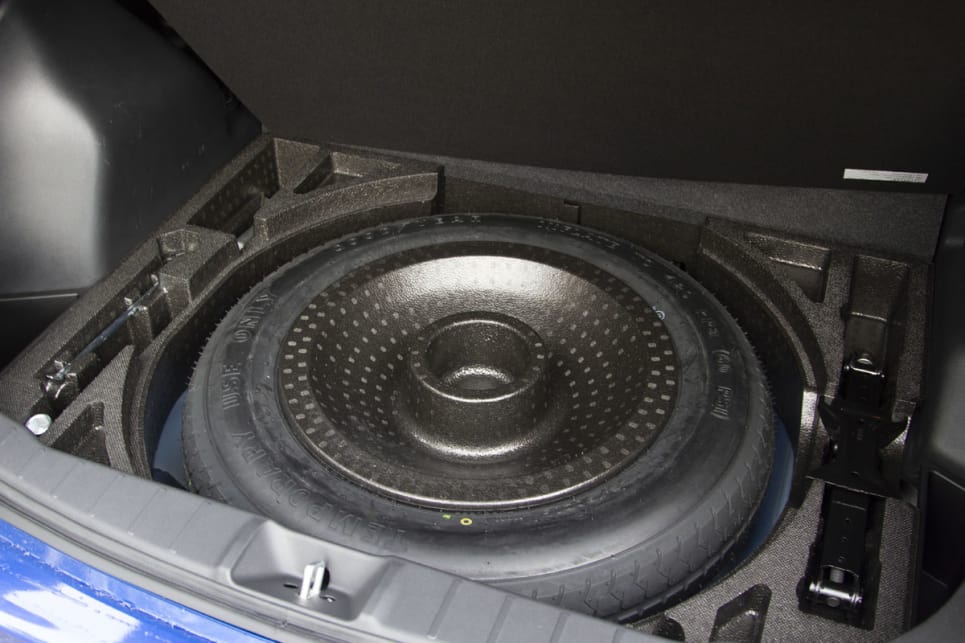
The ES and LS comes with a four-speaker sound system while the top of the range Exceed scores six speakers. All of them have the same 8.0-inch touchscreen multimedia system. What is standard across the range is iPhone and Android integration with Apple CarPlay and Android Auto respectively. The new screen looks good and the updated software is easy to use, but it's not very well integrated - for instance, Apple CarPlay's clock disappears off the edge of the screen.
There is no sat nav (hmmm) or CD player (far enough, it's 2018), but there is digital radio, Bluetooth connectivity and a baffling screen that displays your GPS co-ordinates.
There are seven colours available - Black, 'Lightning Blue', 'Titanium' (grey, obviously), Red, 'Sterling Silver', 'Starlight' and White.
Is there anything interesting about its design?
The early cars were a study in minimalism and looked so bare they could have come straight out of an early Grand Theft Autogame, such was the lack of detailing. These later models feature lashings of chrome and a far less timid approach, on the nose at least. The profile has been the same for the better part of a decade, with just the occasional addition like new wheels or wing mirrors.
The 18-inch wheels give the car a good solid stance and the paint looks pretty good these days. Inside has once again had a going-over. The last proper update to the cabin made it a much better place to be. The part-suede interior of the LS is the one to go for, the Exceed's leather merely adds to the overall cheap-feel. The ASX is entirely unpretentious - no soft plastics, no attempt to cover gaps or blanks (the fifth cupholder is now covered by a dodgy-looking cap) and the switchgear is a mix-and-match arrangement to get the job done.
How practical is the space inside?
Straight up, I'll answer a common question - how many seats? The ASX is as near as you'll get to a five-seater in this segment. Interior photos show generous interior dimensions, its boxy exterior design delivering a good size cabin.
Front seat passengers score a pair of cupholders and a decent-sized central bin with a lid on top doubling as an armrest. Rear seat passengers miss out on many things - there's just one seatback pocket but there are two cupholders in the armrest.
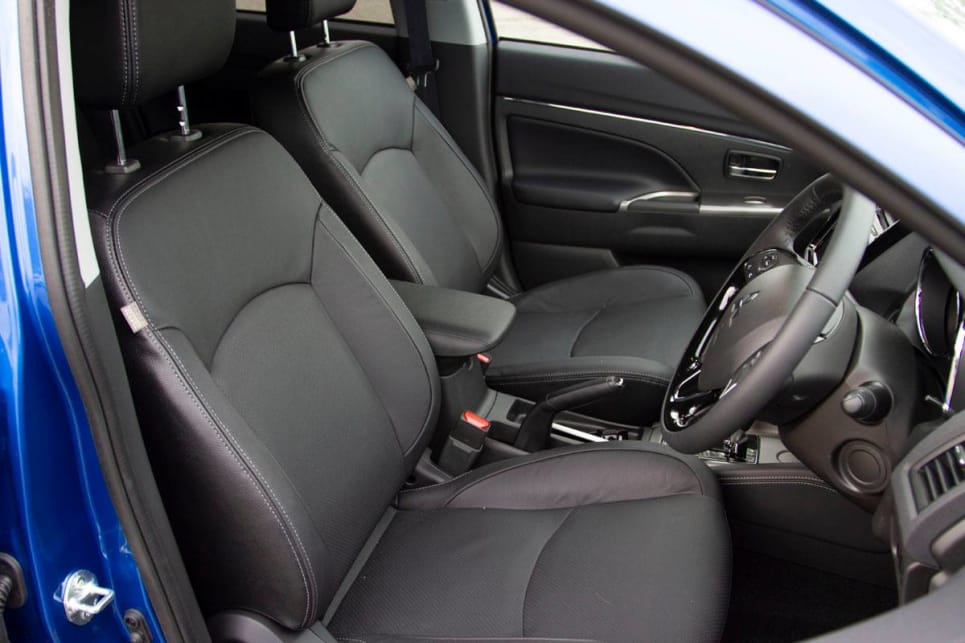
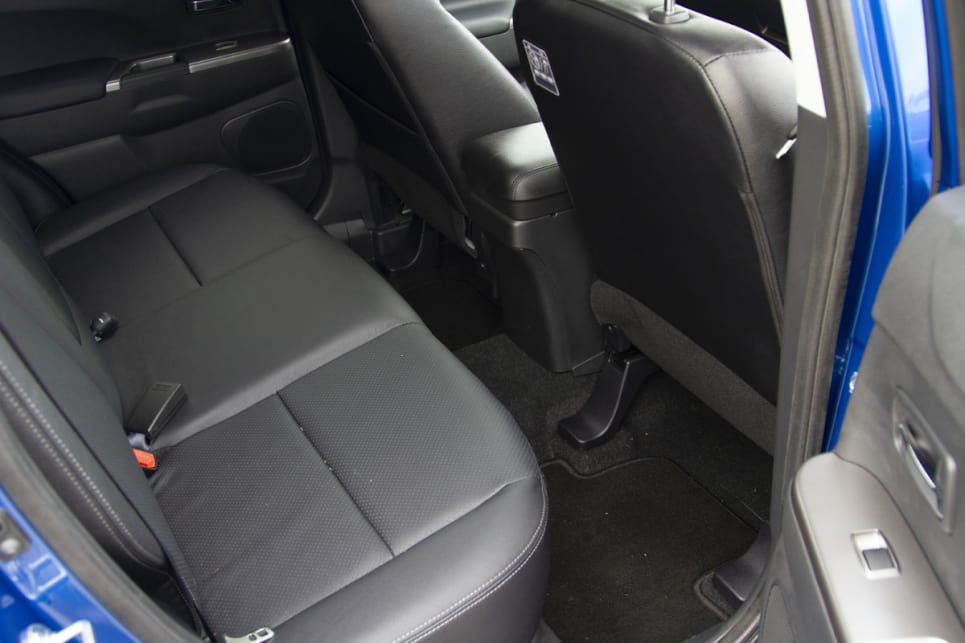
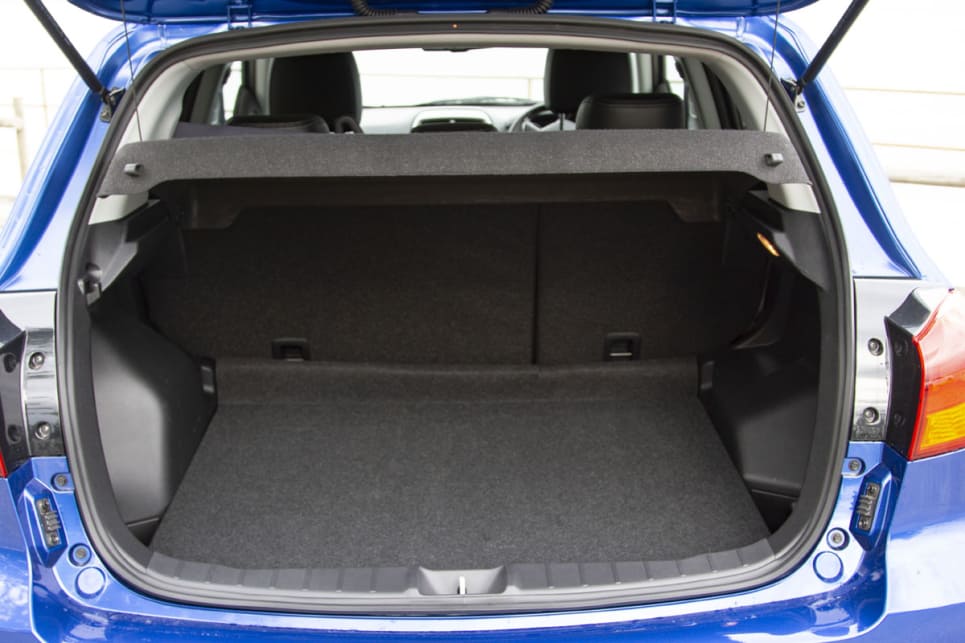
Boot space starts with 393 litres, which is near the top of the class. If it's maximum luggage capacity you're after, drop the 60/40 split-fold rear seat and you'll have 1193 litres.
Despite looking like it's on stilts, the ground clearance is 205mm, which is about the same as the segment's low-rider, the Mazda CX-3. As you might expect, if you're this low-slung - and without 4 wheel drive, off-road ability is compromised.
The 4.4m long ASX's turning circle is a small-ish 10.6 metres.
What are the key stats for the engine and transmission?
The ASX's model simplification extends to the drivetrain. Gone is AWD and diesel, leaving just one petrol engine. The engine specs read fairly adequately - the 2.0-litre naturally aspirated four-cylinder delivers 110kW/197Nm. As with the rest of the segment, engine size and power seems to be legislated to almost these exact specifications.
The 0-100 acceleration performance is best described as leisurely and noisy. The motor, codenamed 4B11, uses a chain rather than timing belt, which should help keep service costs down and improve long-term reliability. The 4B11 is capable of producing a lot more horsepower, but sadly the version of the engine in the Evo X is not available.
On the upside, this simplicity means no turbo problems or diesel problems and in this unstressed spec, engine problems are unlikely to occur with regular servicing.

Power reaches the front wheels through Mitsubishi's ubiquitous continuously variable transmission (CVT). LS buyers can choose a less than bang-up-to-date five-speed manual, but that's probably down to the fact almost nobody buys a manual.
If you're interested in the tank size, oil type and weight, the owners manual lists these things. The CVT seems a hardy if unspectacular unit, so gearbox problems appear unusual in my sweep of the usual internet forums. The CVT's abilities, however, are another thing entirely.
Towing capacity is rated at 750kg unbraked and 1300kg braked.
Just in case you're wondering, there is no LPG (or gas) option.
How much fuel does it consume?
Mitsubishi says the ASX's fuel economy figures are 7.6L/100km of 91 RON petrol. Fuel tank capacity is listed at 63 litres. If you can eke out this sticker figure mileage you could squeeze out nearly 800km of range. We found its real-world fuel consumption is closer to 11.5L/100km in a mix of city and highway driving.
What safety equipment is fitted? What safety rating?
Across the range you get seven airbags, ABS, stability and traction controls, reversing camera and emergency brake assist.
If you need to load up a baby car seat, there are three top-tether anchor points and two ISOFIX anchors.
In the interests of transparency and for an opportunity to self-deprecate for your amusement, about a year ago I wrote that the ASX was missing advanced safety systems and was unlikely to see them anytime soon.
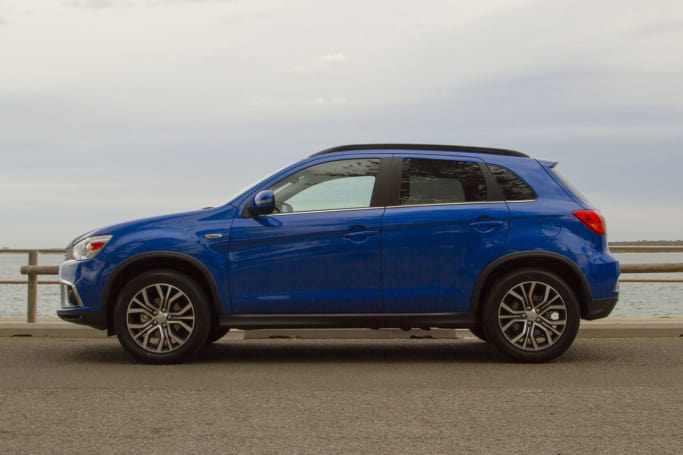
A few weeks later, Mitsubishi released an update which included forward AEB, something that is standard on its CX-3 rival.
That update is called the ADAS package, optional on the ES and standard on the LS and Exceed. ADAS includes lane departure warning, lane change assist, forward AEB and rear cross traffic alert. You also get auto wipers and headlights and rear parking sensors.
The ASX has a maximum five-star ANCAP safety rating, awarded in 2014.
What does it cost to own? What warranty is offered?
The ASX now has a five-year/100,000km warranty with one year of roadside assist in the form of membership to your state or territory's motoring organisation (eg RACV, RACT, NRMA). The three-year capped price servicing regime also includes extending that membership another 12 months.
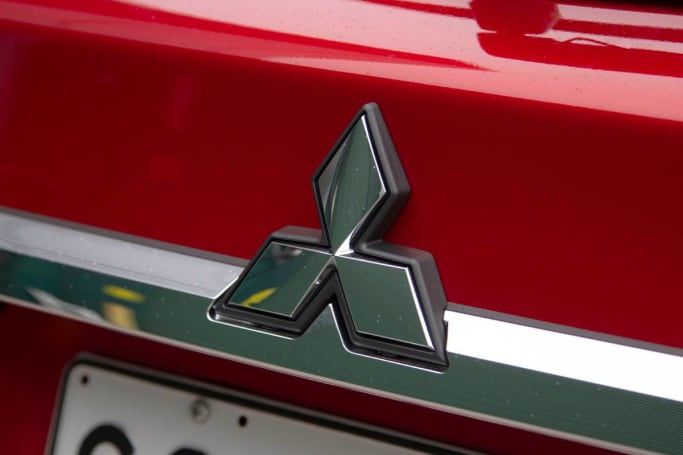
What's it like to drive?
The ASX is the archetypal appliance on wheels. It's one of the least involving cars you will ever drive. The inconsistently-weighted steering completely insulates you from the road. It seems to need an extra quarter turn to do anything and that gets tired pretty quickly.
Verdict
There's still life in the old dog. It's also cheaper than before, although why you'd want to spend money on the Exceed when you have everything that's worthwhile in the ES ADAS or LS is beyond me. As for the pick of the range, I'd go for the LS - it has the nicer interior trim and better seats.
The ASX will be with us for a while yet - as the newest member of the Renault-Nissan Alliance, whatever was on the way has been delayed. So for now, the ASX is the roomiest, cheapest and among the best-equipped in its class. Have a look at the ASX rangeavailable from Group 1 Nissan.

